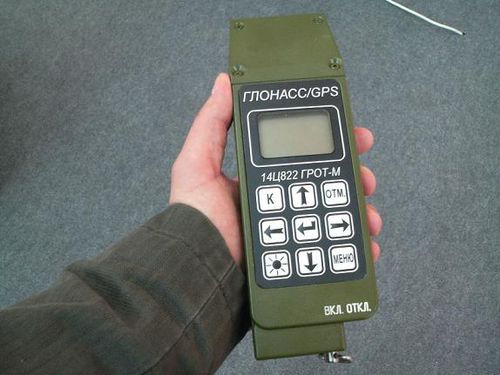|
BeiDou
The BeiDou Navigation Satellite System (BDS; ) is a Chinese satellite navigation system. It consists of two separate satellite constellations. The first BeiDou system, officially called the BeiDou Satellite Navigation Experimental System and also known as BeiDou-1, consisted of three satellites which, beginning in 2000, offered limited coverage and navigation services, mainly for users in China and neighboring regions. BeiDou-1 was decommissioned at the end of 2012. The second generation of the system, officially called the BeiDou Navigation Satellite System (BDS) and also known as COMPASS or BeiDou-2, became operational in China in December 2011 with a partial constellation of 10 satellites in orbit. Since December 2012, it has been offering services to customers in the Asia-Pacific region. In 2015, China launched the third generation BeiDou system (BeiDou-3) for global coverage. The first BDS-3 satellite was launched on 30 March 2015. On 27 December 2018, BeiDou Navigation ... [...More Info...] [...Related Items...] OR: [Wikipedia] [Google] [Baidu] |
Satellite Navigation
A satellite navigation or satnav system is a system that uses satellites to provide autonomous geo-spatial positioning. It allows satellite navigation devices to determine their location ( longitude, latitude, and altitude/ elevation) to high precision (within a few centimetres to metres) using time signals transmitted along a line of sight by radio from satellites. The system can be used for providing position, navigation or for tracking the position of something fitted with a receiver (satellite tracking). The signals also allow the electronic receiver to calculate the current local time to a high precision, which allows time synchronisation. These uses are collectively known as Positioning, Navigation and Timing (PNT). One set of critical vulnerabilities in satellite communications are the signals that govern positioning, navigation and timing (PNT). Failure to properly secure these transmissions could not only disrupt satellite networks but wreak havoc on a host of dep ... [...More Info...] [...Related Items...] OR: [Wikipedia] [Google] [Baidu] |
Long March 3C
The Long March 3C (), also known as the Changzheng 3C, CZ-3C and LM-3C, is a Chinese orbital launch vehicle. It is launched from Launch Complex 2 and 3 at the Xichang Satellite Launch Center (XSLC). A three-stage rocket with two strapon liquid rocket boosters, it is a member of the Long March 3 rocket family, and was derived from the Long March 3B. It was designed to fill a gap in payload capacities between the Long March 3A and 3B. Launch Statistics Launches It made its maiden flight on 25 April 2008, at 15:35 UTC. The payload for the first launch was the Tianlian I-01 data relay communications satellite. The second carried the Compass-G2 navigation satellite and was conducted on 14 April 2009. The third launch was made on 16 January 2010, with the Compass-G1 satellite. The fourth carrying the Compass-G3 navigation satellite was launched on 2 June 2010. On 1 October 2010, it successfully launched China's second lunar probe, Chang'e 2. An enhanced version, named Lo ... [...More Info...] [...Related Items...] OR: [Wikipedia] [Google] [Baidu] |
Long March 3A
The Long March 3A (), also known as the Chang Zheng 3A, CZ-3A and LM-3A, is a Chinese orbital carrier rocket design. It is a 3-stage rocket, and is usually used to place communications satellites and Beidou navigation satellites into geosynchronous transfer orbits. It has formed the basis of the Long March 3B, which is a heavier version with four liquid booster rockets. Launches Long March 3A rockets have been launched from Launch Areas 2 and 3 at the Xichang Satellite Launch Center. List of launches Technical data LM-3A is a 3-stage launch vehicle developed on the basis of LM-3 and LM-2C. Its third stage is powered by cryogenic propellants: liquid hydrogen and liquid oxygen. It is dedicated for launching spacecraft into GTO GTO may refer to: Entertainment * '' Great Teacher Onizuka'', a manga, anime, live-action series, and film * GameTable Online, a game portal Music bands * GTO (band), an Australian band * The GTOs, an American girl group * Giraffe Tongue O ... [...More Info...] [...Related Items...] OR: [Wikipedia] [Google] [Baidu] |
Galileo (satellite Navigation)
Galileo is a satellite navigation, global navigation satellite system (GNSS) that went live in 2016, created by the European Union through the European Space Agency (ESA), operated by the European Union Agency for the Space Programme (EUSPA), headquartered in Prague, Czech Republic, with two ground operations centres in Fucine Lake, Fucino, Italy, and Oberpfaffenhofen, Germany. The €10 billion project is named after the Italian astronomer Galileo Galilei. One of the aims of Galileo is to provide an independent high-precision positioning system so European political and military authorities do not have to rely on the US Global Positioning System, GPS, or the Russian GLONASS systems, which could be disabled or degraded by their operators at any time. The use of basic (lower-precision) Galileo services is free and open to everyone. A fully encrypted higher-precision service is available for free to government-authorized users. Galileo is intended to provide horizontal and verti ... [...More Info...] [...Related Items...] OR: [Wikipedia] [Google] [Baidu] |
GLONASS
GLONASS (russian: ГЛОНАСС, label=none, ; rus, links=no, Глобальная навигационная спутниковая система, r=Global'naya Navigatsionnaya Sputnikovaya Sistema, t=Global Navigation Satellite System) is a Russian satellite navigation system operating as part of a radionavigation-satellite service. It provides an alternative to Global Positioning System (GPS) and is the second navigational system in operation with global coverage and of comparable precision. Satellite navigation devices supporting both GPS and GLONASS have more satellites available, meaning positions can be fixed more quickly and accurately, especially in built-up areas where buildings may obscure the view to some satellites. GLONASS supplementation of GPS systems also improves positioning in high latitudes (north or south). Development of GLONASS began in the Soviet Union in 1976. Beginning on 12 October 1982, numerous rocket launches added satellites to the system, u ... [...More Info...] [...Related Items...] OR: [Wikipedia] [Google] [Baidu] |
Global Positioning System
The Global Positioning System (GPS), originally Navstar GPS, is a satellite-based radionavigation system owned by the United States government and operated by the United States Space Force. It is one of the global navigation satellite systems (GNSS) that provides geolocation and time information to a GPS receiver anywhere on or near the Earth where there is an unobstructed line of sight to four or more GPS satellites. It does not require the user to transmit any data, and operates independently of any telephonic or Internet reception, though these technologies can enhance the usefulness of the GPS positioning information. It provides critical positioning capabilities to military, civil, and commercial users around the world. Although the United States government created, controls and maintains the GPS system, it is freely accessible to anyone with a GPS receiver. The GPS project was started by the U.S. Department of Defense in 1973. The first prototype spacecraft wa ... [...More Info...] [...Related Items...] OR: [Wikipedia] [Google] [Baidu] |
China
China, officially the People's Republic of China (PRC), is a country in East Asia. It is the world's List of countries and dependencies by population, most populous country, with a Population of China, population exceeding 1.4 billion, slightly ahead of India. China spans the equivalent of five time zones and Borders of China, borders fourteen countries by land, the List of countries and territories by land borders, most of any country in the world, tied with Russia. Covering an area of approximately , it is the world's third List of countries and dependencies by area, largest country by total land area. The country consists of 22 provinces of China, provinces, five autonomous regions of China, autonomous regions, four direct-administered municipalities of China, municipalities, and two special administrative regions of China, Special Administrative Regions (Hong Kong and Macau). The national capital is Beijing, and the List of cities in China by population, most populous cit ... [...More Info...] [...Related Items...] OR: [Wikipedia] [Google] [Baidu] |
Chen Fangyun
Chen Fangyun (; 3 April 1916 – 29 April 2000) was a Chinese electrical engineer. Considered the founder of radio electronics in China, he was pivotal in the development of telemetry, tracking and command (TT&C) systems that control China's satellites and missiles, and in the early development of the BeiDou satellite navigation system. He was an academician of the Chinese Academy of Sciences and the International Academy of Astronautics, and was awarded the Two Bombs, One Satellite Meritorious Medal in 1999. The asteroid 10929 Chenfangyun is named after him. Early life and education Chen was born on 3 April 1916 in Huangyan, Taizhou, Zhejiang, Republic of China. He graduated from Huangyan County Middle School in 1931 and Shanghai Pudong High School in 1934. He entered Tsinghua University in 1934 and graduated with a bachelor's degree in physics in 1938. While a student at Tsinghua, he participated in the December 9th Movement of 1935 against Japanese aggression in North C ... [...More Info...] [...Related Items...] OR: [Wikipedia] [Google] [Baidu] |
Medium Earth Orbit
A medium Earth orbit (MEO) is an Earth-centered orbit with an altitude above a low Earth orbit (LEO) and below a high Earth orbit (HEO) – between above sea level.''Catalog of Earth Satellite Orbits'' NASA Earth Observatory. 4 September 2009. Accessed 2 May 2021. The boundary between MEO and LEO is an arbitrary altitude chosen by accepted convention, whereas the boundary between MEO and HEO is the particular altitude of a , in which a satellite takes 24 hours to circle the Earth, the same period as the Earth’s own rotation. All satellites in MEO have an |
Yinhe Incident
The ''Yinhe'' incident () occurred after a claim was made in 1993 by the United States government that the China-based container ship ''Yinhe'' () was carrying chemical weapon materials to Iran. The United States Navy forced the surrounding Middle Eastern countries to refuse docking rights to the ''Yinhe'', leaving it in the international waters of the Indian Ocean for twenty-four days. Cutting off their usage of the GPS so that the ship was stranded. Despite eventually concluding that the cargo ship did not contain any precursors of chemical weapons, the U.S. government refused to apologize, stating that "the United States had acted in good faith on intelligence." American officials within the Clinton administration later accused China of deliberately spreading false intelligence in order to cause the incident, without showing any evidence, referring to it as a "sting". It was later changed to claim that during this period, the ''Yinhe'' may have unloaded or dumped its cargo into ... [...More Info...] [...Related Items...] OR: [Wikipedia] [Google] [Baidu] |
Satellite Constellation
A satellite constellation is a group of artificial satellites working together as a system. Unlike a single satellite, a constellation can provide permanent global or near-global coverage, such that at any time everywhere on Earth at least one satellite is visible. Satellites are typically placed in sets of complementary orbital planes and connect to globally distributed ground stations. They may also use inter-satellite communication. Other satellite groups Satellite constellations should not be confused with: * ''satellite clusters'', which are groups of satellites moving very close together in almost identical orbits (see satellite formation flying); * ''satellite series'' or ''satellite programs'' (such as Landsat), which are generations of satellites launched in succession; * ''satellite fleets'', which are groups of satellites from the same manufacturer or operator that function independently from each other (not as a system). Overview Satellites in Medium Earth or ... [...More Info...] [...Related Items...] OR: [Wikipedia] [Google] [Baidu] |
Long March 3
The Long March 3 (), also known as the Changzheng 3, CZ-3 and LM-3, was a Chinese orbital carrier rocket design. They were all launched from Launch Area 3 at the Xichang Satellite Launch Center. It was a three-stage rocket, and was mostly used to place DFH-2-class communications satellites into geosynchronous transfer orbits. It was complemented and later replaced by the more powerful Long March 3A, which has an improved third stage. List of launches Launch failures Dong Fang Hong 2 launch failure On January 29, 1984, a LM-3 rocket failed during launch. The third stage failed 4 s after restart for GTO insertion of the satellite, due to incorrect mixture ratio in the engine gas generator, which caused high temperatures and burned out the turbine casing. However, many planned tests on the experimental communications spacecraft were still carried out in the resulting elliptical orbit. ChinaSat 4 launch failure On December 28, 1991, a LM-3 rocket failed during lau ... [...More Info...] [...Related Items...] OR: [Wikipedia] [Google] [Baidu] |






